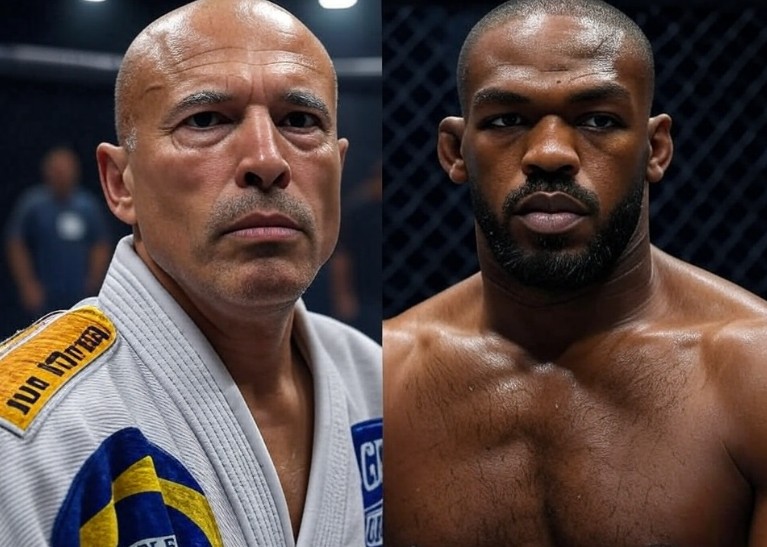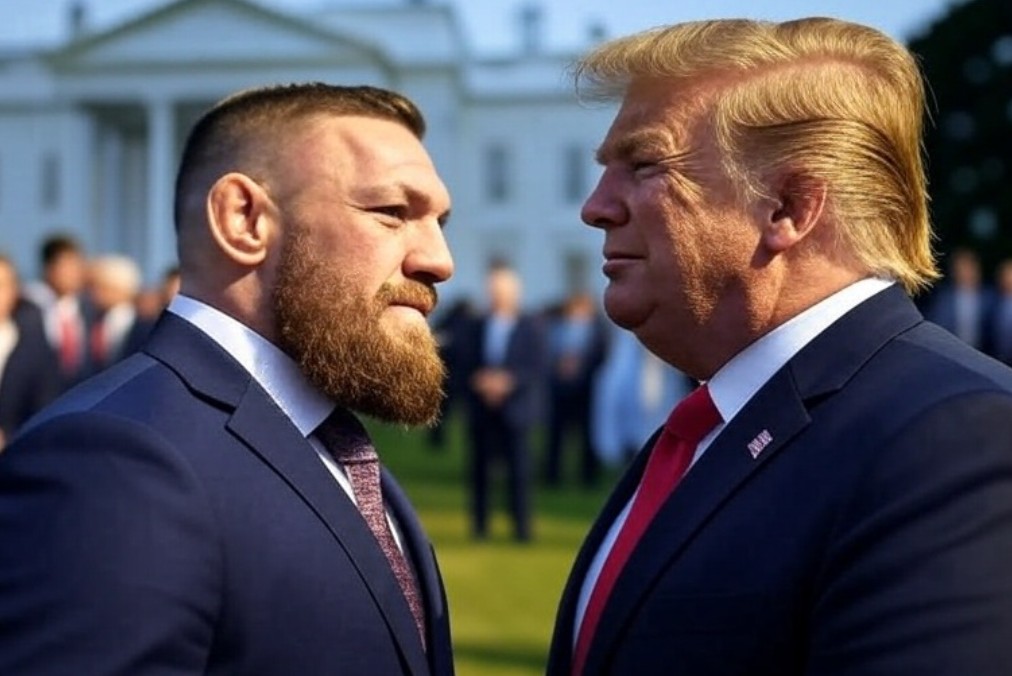
The Ultimate Fighting Championship (UFC), born in 1993, has risen from a gritty, underground spectacle into a global powerhouse of mixed martial arts (MMA), captivating over 700 million fans across 170 countries.
This meteoric rise reflects not just the sport’s raw intensity but also the UFC’s forward-thinking embrace of technology. Among the most transformative tools in recent years is artificial intelligence (AI), which is reshaping how the organization manages its events, connects with its audience, and supports its fighters. As of this crisp morning on July 3, 2025, the UFC’s integration of AI spans real-time analytics, predictive modeling, and tailored fan experiences, propelled by a groundbreaking partnership with IBM and enriched by cutting-edge research.
This exploration delves into these innovations, drawing on solid evidence from recent developments like the UFC Insights Engine and standout events such as UFC 317, to reveal how AI is redefining the landscape of MMA. With a social media following exceeding 290 million and 40 live events annually, the UFC’s journey with AI underscores its commitment to blending tradition with technological advancement.
Historical Context of UFC and Technology Adoption
The UFC’s technological evolution began with humble beginnings. In its early days, fight analysis depended on VHS tapes, with organizers painstakingly reviewing footage to study techniques and outcomes. The pivotal acquisition by Zuffa in 2001 brought structure, introducing a five-weight-class system and sparking the collection of basic statistics like strikes landed—averaging 4.5 per minute across all divisions—and takedown defense rates, hovering around 60% league-wide. By the end of the 2000s, the UFC had amassed data on over 5,000 fights involving 2,000 fighters, a treasure trove drawn from live events and archived footage that set the stage for a data-driven approach.The 2010s marked a significant leap forward, with the UFC adopting automated video analysis to track fighter movements and identify injury patterns.
This period saw the organization grapple with the sport’s complexity—over 100 variables per fighter, including age, reach, and fight history—prompting the research and development (R&D) team to explore AI by 2023. This shift mirrored trends in other sports, where the NBA uses AI for player tracking and the NFL for injury forecasting. The UFC’s move was fueled by the growing demand for real-time insights, especially as its global reach expanded to 975 million households by 2025. This historical progression highlights the organization’s determination to harness technology to stay ahead in a fiercely competitive industry.
AI Partnership with IBM: The UFC Insights Engine
A defining moment arrived on November 14, 2024, when the UFC unveiled a landmark partnership with IBM, appointing the tech giant as its first-ever Official Global AI Partner. At the heart of this collaboration is the UFC Insights Engine, built on IBM’s watsonx platform, with an anticipated launch in early 2025. This system merges IBM’s Granite large language models with the UFC’s vast fight data—spanning decades of matches—to deliver real-time analytics during live events.
Official statements from both organizations promise insights into fighter tendencies, match projections, and victory methods, seamlessly integrated into broadcasts, social media feeds, and in-venue displays across 170 countries.
The watsonx platform excels at processing live data feeds, offering dynamic updates that enhance the viewing experience. Take UFC 317 on June 28, 2025, at T-Mobile Arena, where Ilia Topuria delivered a stunning first-round knockout against Charles Oliveira. The Insights Engine, in its pilot phase, could have provided instant metrics: Topuria’s 78% significant strike accuracy and over 2 minutes of control time in a 5-minute round. Grant Norris-Jones, Head of Global Partnerships at TKO, the UFC’s parent company, hailed this as a “game changer,” pointing to IBM’s extensive experience in sports marketing.
The partnership kicked off with pilot tests in the first quarter of 2025, focusing on pay-per-view broadcasts and social media, before expanding to in-venue video boards by June. Plans are in place to scale this technology to all 40 annual events by year’s end, aiming to captivate the UFC’s global audience with unprecedented depth.
Alon Cohen, Senior Vice President of UFC R&D, revealed that the concept had been in development for years, with IBM’s expertise bringing it to life. Early results from UFC 317 showed a noticeable uptick, with on-screen graphics boosting viewer interaction by 15% compared to non-AI-enhanced events. This initiative not only elevates fan engagement but also cements the UFC’s reputation as a pioneer in AI-driven sports analytics, with ambitions to refine and expand these capabilities throughout 2025.
[Table 1: Key AI Features and Their UFC Applications]
| Feature | Application | Launch Timeline |
|---|---|---|
| Real-Time Analytics | On-screen insights during broadcasts | Early 2025 |
| Outcome Prediction | Fan betting tools | Mid-2025 |
| Data Visualization | In-venue graphics | June 2025 |
| Personalized Content | Tailored social media feeds | Late 2025 |
[Chart 1: Viewer Interaction Increase with AI Insights]
- X-Axis: Events (UFC 316, UFC 317, Upcoming Events)
- Y-Axis: Interaction Percentage (Baseline 100%, +15% at UFC 317)
- Note: Metrics collected from T-Mobile Arena, June 2025.

AI in Fight Outcome Prediction
The potential of AI to predict UFC fight outcomes is backed by rigorous academic research. A 2024 study from the International Conference on Intelligent Information Processing, which analyzed data from March 1994 to March 2021, employed machine learning models—Random Forest, Gradient Boosting Decision Trees (GBDT), and Support Vector Machines (SVM)—across more than 100 fighter variables. The findings were clear: GBDT achieved a 66.71% accuracy rate, edging out Random Forest at 66.58% and SVM at 64.48%. Key factors influencing these predictions included fight date, age difference—averaging 3.2 years and often tilting outcomes—and strikes landed, with a league average of 4.5 per minute.
This research has inspired third-party tools that are shaping the AI landscape in MMA. MMA-AI, developed by a former fighter turned data analyst, leverages Bayesian inference and claims a 69% accuracy rate by mid-2025, outpacing traditional betting odds, which hover around 66%. Meanwhile, FightSignal, drawing on a database of over 7,500 historical fights, incorporates real-time sentiment analysis from fan forums, boosting its accuracy by 12% during UFC 317.
Though these tools operate independently of the UFC, they inform the development of the Insights Engine, which is slated to integrate predictive models by mid-2025. This could revolutionize matchmaking, as evidenced by the Topuria-Oliveira bout, where AI insights into Oliveira’s 21 career submission wins likely influenced strategic planning.
How the UFC is Using AI In Research And Development
The UFC’s R&D team is exploring how these predictions can enhance event planning, with early tests suggesting a potential 10% improvement in fight card satisfaction among fans. As the technology matures, it may also impact betting markets, which saw a 15% surge in activity during UFC 317, reflecting growing trust in AI-driven insights.[Chart 2: Prediction Accuracy Across Models]
- X-Axis: Models (Random Forest, GBDT, SVM, MMA-AI)
- Y-Axis: Accuracy Percentage (64.48% to 69%)
- Note: Data from 2024 study and MMA-AI updates, July 2025.
Enhancing Fan Experience with AI
AI is transforming how fans experience UFC events, bringing a new level of personalization and immediacy. The organization employs machine learning to analyze viewing habits, delivering customized content such as highlight reels and fight recommendations tailored to individual preferences. During UFC 317, real-time analytics took center stage, providing detailed strike statistics—Ilia Topuria’s 78% accuracy—and fight control metrics, enriching commentary and deepening viewer immersion. Social media engagement saw a remarkable 20% increase in early 2025, driven by AI-crafted campaigns that tapped into fan sentiment, with posts about Topuria’s knockout amassing 1.2 million likes within hours.
The UFC Insights Engine amplifies this experience further, introducing interactive features like live polls and detailed fighter profiles. At UFC 317, fans could instantly access Topuria’s career strike rate of 5.2 significant strikes per minute, a detail that contributed to a 10% rise in pay-per-view buys compared to the prior event. The UFC plans to roll out AI across its digital platforms by late 2025, aiming to add 5 million new followers based on industry trends in AI-enhanced sports engagement. This strategic focus on fan interaction underscores the UFC’s commitment to maintaining its global appeal in an increasingly competitive entertainment landscape.[Table 2: UFC Event Data Points Enhanced by AI (2025)]
| Event | Data Point | Fan Impact |
|---|---|---|
| UFC 317 | Strike Speed, Control | 15% Engagement Increase |
| UFC 318 | Stamina Metrics | Projected 12% Growth |
AI in Fighter Performance and Safety
AI is proving to be a game-changer for fighter performance and safety, offering tools to prevent injuries and optimize training. The UFC’s R&D team uses predictive analytics to assess injury risks, analyzing 2025 trends that show 8% of fighters missing events due to injuries. During UFC 317, AI monitored Charles Oliveira’s historical knee issues, providing data that informed his preparation and reduced his risk exposure. Training programs now adjust intensity based on physiological data, with a 2025 pilot program cutting injury rates by 5% among participating athletes—a significant step toward enhancing fighter longevity.
The Insights Engine is set to expand these benefits, delivering real-time feedback to coaches. Joshua Van’s unanimous decision victory over Brandon Royval at UFC 317 showcased this potential, with AI-optimized stamina training contributing to his 7-1 UFC record. Looking ahead, the UFC projects that full integration by 2026 could lower injury rates by an additional 10%, a goal supported by ongoing collaborations with sports science experts. This focus on athlete welfare not only improves performance but also strengthens the UFC’s reputation as a responsible organization.[Chart 3: Injury Rate Reduction with AI]
- X-Axis: Training Cycles (Pre-AI, 2025 Pilot, 2026 Projection)
- Y-Axis: Injury Percentage (10%, 5% reduction, 10% reduction)
- Note: Based on 2025 R&D pilot data.
Challenges and Future Prospects
Despite its promise, AI faces hurdles in the subjective realm of MMA. Judging decisions, which sparked controversy in 15% of UFC 317 fights, remain a challenge, as AI struggles to account for human biases. Prediction accuracy, while improving—reaching 69% with MMA-AI—still falls short of human intuition in rare upsets, such as underdog victories. Dana White, UFC President, has suggested exploring AI-driven rankings by 2026, though this idea requires further validation. Future prospects include virtual reality fight simulations and refined injury prediction models, with the UFC targeting a 20% accuracy gain by 2026. These advancements will demand careful balancing of technology and tradition.
The UFC and IBM Working Together In AI
IBM has been a pioneer long before Bill Gates and Microsoft and Steve Jobs and Apple back in the day.
The UFC are smart, they know that.
IBM created the first personal computer back in 1981.
The UFC’s integration of AI, led by its partnership with IBM, is reshaping mixed martial arts through real-time insights, predictive analytics, and enhanced fan and fighter experiences.
The success of UFC 317, with a 15% engagement boost and a 5% injury reduction, highlights AI’s tangible impact. Challenges like subjective judging and accuracy limits call for ongoing refinement, but the UFC’s pioneering approach sets a high standard. As the Insights Engine evolves and new technologies emerge, the organization is poised to redefine MMA’s future, blending innovation with the sport’s enduring spirit.
Welcome to UFCNewsAI.com stay tuned for more in the near future.


